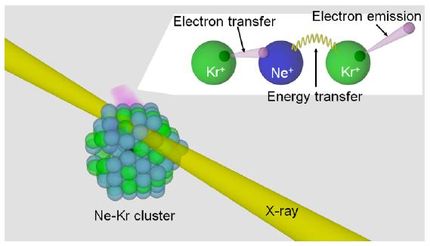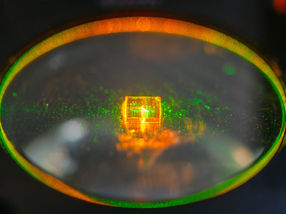Single-pixel camera has multiple futures
Terahertz version adds new potential to unique invention
A terahertz version of the single-pixel camera developed by rice University researchers could lead to breakthrough technologies in security, telecom, signal processing and medicine. The research, recently published online in Applied Physics Letters, describes a way to replace the expensive, multipixel sensor arrays used in current terahertz imaging systems with a single sensor.
Two keys to the system are the ongoing development of a modulator that would feed a rapid-fire series of randomized images to the sensor, and the compressed sensing algorithm that turns the raw data into an image.
The advances "could make for very inexpensive security and scientific cameras in the near future," said Richard Baraniuk, Rice's Cameron Professor in Electrical and Computer Engineering, who helped make a proof-of-concept prototype that used 600 sheets of copper (which blocks terahertz radiation) through which random holes had been punched as the modulator.
"There's very good reason to believe you could build a terahertz modulator that could do that same task electrically, and very fast," said Daniel Mittleman, a Rice professor in electrical and computer engineering, who is testing a 4-by-4 array of metamaterials supplied by Los Alamos National Laboratory that become opaque to terahertz radiation when a voltage is applied.
"There are lots of applications for terahertz imaging, if you could make a real-time imager that's sensitive enough. Some of them are pretty science-fictiony, but some are pretty realistic," Mittleman said. "I think this is really promising."
Most read news
Other news from the department science

Get the analytics and lab tech industry in your inbox
By submitting this form you agree that LUMITOS AG will send you the newsletter(s) selected above by email. Your data will not be passed on to third parties. Your data will be stored and processed in accordance with our data protection regulations. LUMITOS may contact you by email for the purpose of advertising or market and opinion surveys. You can revoke your consent at any time without giving reasons to LUMITOS AG, Ernst-Augustin-Str. 2, 12489 Berlin, Germany or by e-mail at revoke@lumitos.com with effect for the future. In addition, each email contains a link to unsubscribe from the corresponding newsletter.


























































